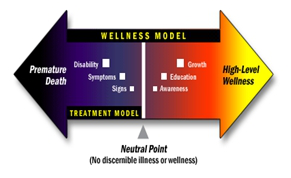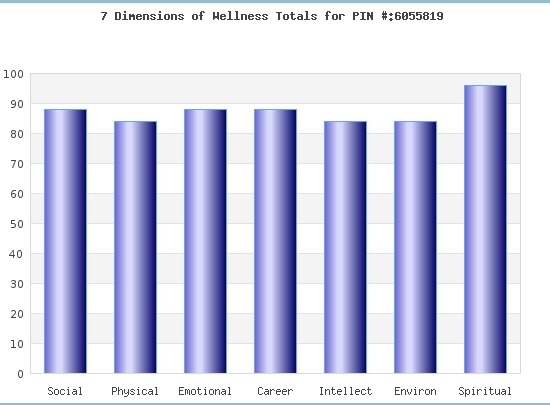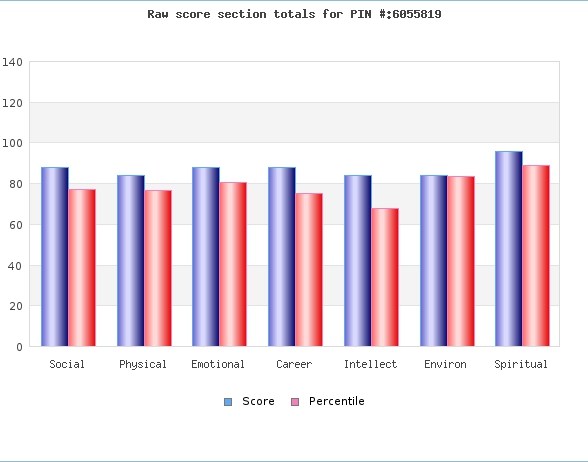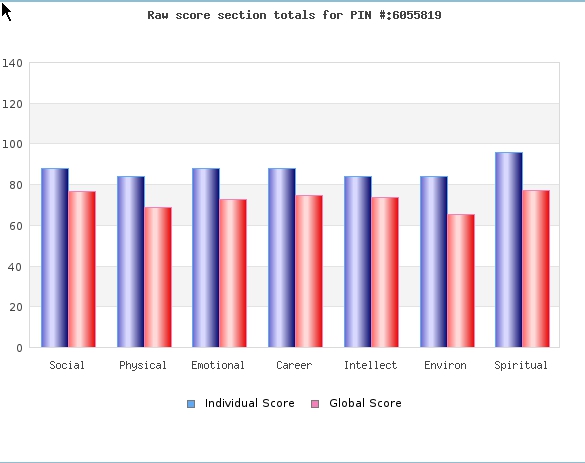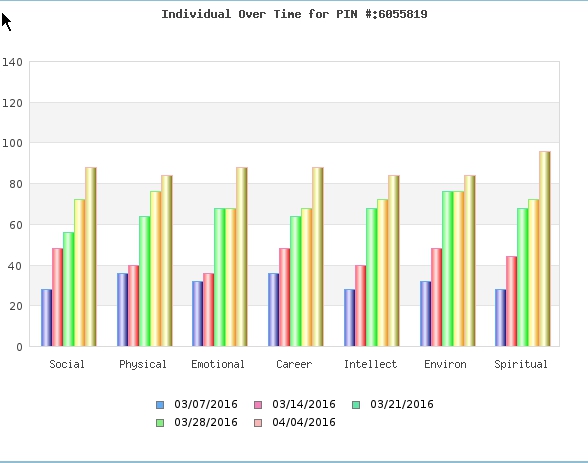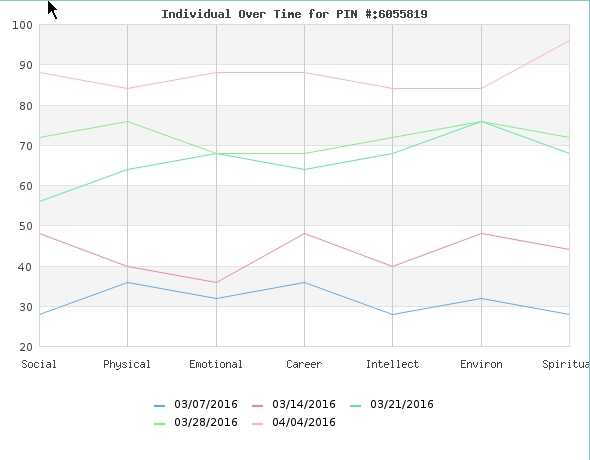This 7 Dimensions of Wellness site is about personal wellness. The quiz you are about to take measures your perception of your overall wellness.
Wellness is a philosophy
Wellness is a way of living healthy, a way of living period.
Personal wellness
Personal wellness is defined as a dynamic process of becoming aware of and making conscious choices toward a more balanced healthy lifestyle. It includes learning new coping and communication skills that address both the positive and negative aspects of human existence.
Wellness as wholeness
Wellness as wholeness is a way of cultivating health and well-being of individuals, communities, organizations, societies, and the environment by living and acting with awareness of the wholeness and the interconnectedness of all living systems.
Wellness requires...
Wellness requires personal transformation vs transactions between individuals. Remembering that no one is perfect, and being well requires taking accountability/responsibility for your own experience.
What is Well-being?*
There is no consensus around a single definition of well-being, but there is general agreement that at minimum, well-being includes the presence of positive emotions and moods (e.g., contentment, happiness), the absence of negative emotions (e.g., depression, anxiety), satisfaction with life, fulfillment and positive functioning. In simple terms, well-being can be described as judging life positively and feeling good. For public health purposes, physical well-being (e.g., feeling very healthy and full of energy) is also viewed as critical to overall well-being. Researchers from different disciplines have examined different aspects of well-being that include the following:
· Physical well-being.
· Economic well-being.
· Social well-being.
· Development and activity.
· Emotional well-being.
· Psychological well-being.
· Life satisfaction.
· Domain specific satisfaction.
· Engaging activities and work.
What is the difference between health-related quality of life, well-being, flourishing, positive mental health, optimal health, happiness, subjective well-being, psychological well-being, life satisfaction, hedonic well-being, and other terms that exist in the literature?
Some researchers suggest that many of the terms are synonymous, whereas others note that there are major differences based on which dimensions are independent and contribute most to well-being. This is an evolving science, with contributions from multiple disciplines. Traditionally, health-related quality of life has been linked to patient outcomes, and has generally focused on deficits in functioning (e.g., pain, negative affect). In contrast, well-being focuses on assets in functioning, including positive emotions and psychological resources (e.g., positive affect, autonomy, mastery) as key components. Some researchers have drawn from both perspectives to measure physical and mental well-being for clinical and economic studies. Subjective well-being typically refers to self-reports contrasted with objective indicators of well-being. The term, "positive mental health" calls attention to the psychological components that comprise well-being from the perspective of individuals interested primarily in the mental health domain. From this perspective, positive mental health is a resource, broadly inclusive of psychological assets and skills essential for well-being. But, the latter generally excludes the physical component of well-being. "Hedonic" well-being focuses on the "feeling" component of well-being (e.g., happiness) in contrast to “eudaimonic” well-being which focuses on the "thinking" component of well-being (e.g., fulfillment). People with high levels of positive emotions, and those who are functioning well psychologically and socially are described by some as having complete mental health, or as "flourishing".
In summary, positive mental health, well-being and flourishing refer to the presence of high levels of positive functioning—primarily in the mental health domain (inclusive of social health). However, in its broadest sense, well-being encompasses physical, mental and social domains.
The reasons why well-being and related constructs should be measured and evaluating how these domains can be changed should help inform which domains, e.g., life satisfaction, positive affect, autonomy, meaning, vitality, pain) should be measured, and which instruments and methods to use.
* Much of this material is taken from pages at the Center for Disease Control and Prevention
Next
